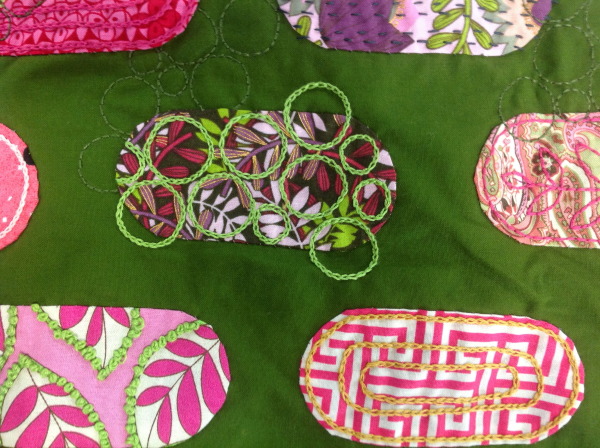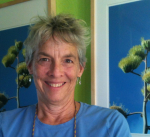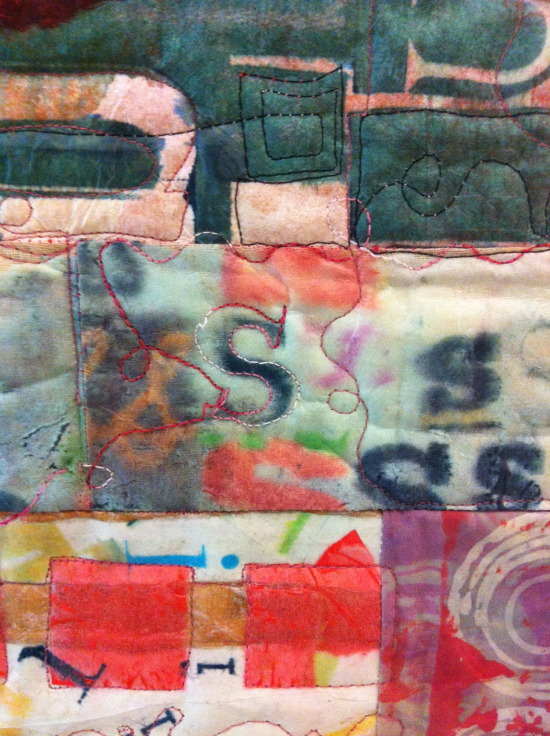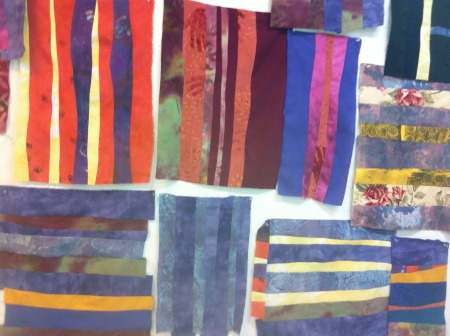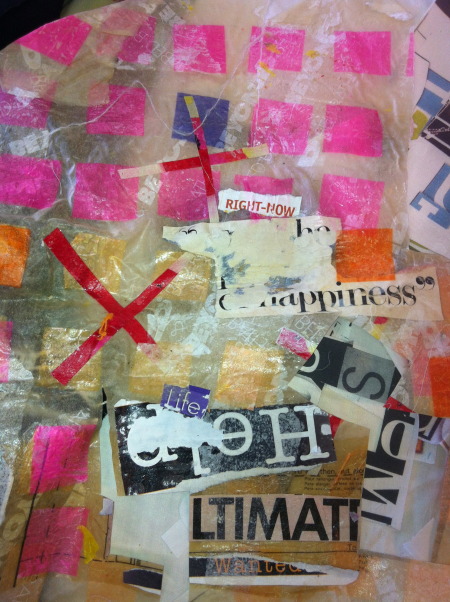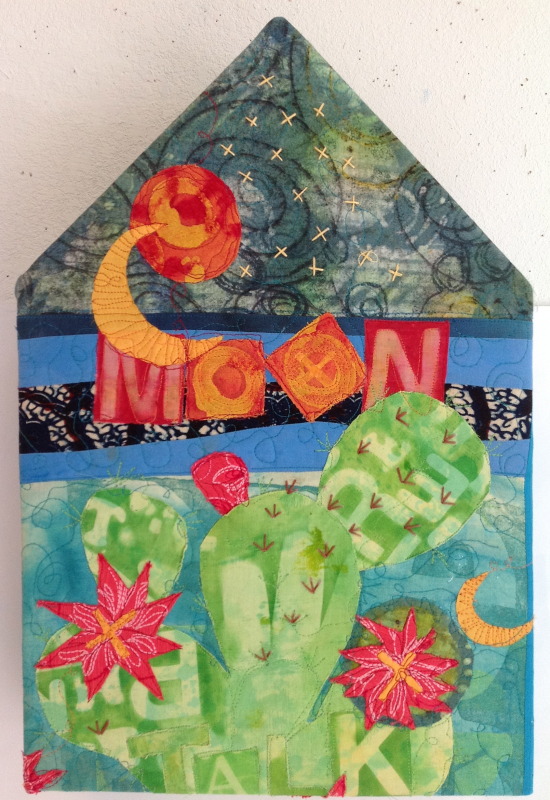
Here's what we'll be tackling during my next course at the Southwest School of Art. I think the class is full (whoppee!) or nearly so. However, I think this is such an important facet of our work as artists. Discovering our own certain and individual voices as artists is what can take us past our own limited view of our work and in new and exciting directions.
Here's one of the handouts I'll be doling our during the first session -- you're welcome to try out the ideas on your own!
It seems to me that there are several parts to this process, and several important approaches to this self discovery process.
Pure Form: I believe – and my belief is supported by more than 30 years of work with children in creative learning environments – that each of us is born with an innate preference/leaning toward a particular way of perceiving and giving form that is directly connected to what I (and my colleagues in this work) call the sensory alphabet. This vocabulary of non-verbal qualities – line, color, shape, space, light, texture, movement, sound and rhythm -- is a way of thinking about and organizing one’s individual strengths of perception and invention. Looking at one’s preferences and natural tendencies through this lens serves as both a way to self discovery and as a bridge to understand other creative work. This vocabulary is not just an artistic one – it can hold as true to creative work in business as in design, in science as in art. (This, by the way is what our new book, THE MISSING ALPHABET is all about.)
Think about which of these constructs is easiest for you to notice, to manipulate, to play with –is it pattern (rhythm) or texture or color? What did you love as a young child? Which of these elements are most important to you in your home, your environment? What artists do you resonate to? Design exercises and experiences for yourself that feed your mind’s natural interests, or find teachers that share your sensibilities (look at their work and see what they say about it) who can provide classes that feed your perceptual strengths
An understanding of your own creative style in terms of this vocabulary can be the starting place for finding your voice – and even help you find the best and strongest medium for work. For example, if color is my strong suite, I might take time to do dye and discharge samples, study Albers and other colorist’s work, take photos exploring color themes, investigate watercolor and glazing, look at color as understood by chemists and physicists, etc. If movement is a strong suite, I might see how to incorporate moving elements in my textile work, take up techniques that use my body in strenuous and challenging fashion, look at how movement blurs an image and how to capture that sense with dyeing or printing, I might even want to dye fabrics and construct garments for dance performances or architectural installations with moving components.
Most of us have three or four of these strong suites that interact in interesting ways and can pose intriguing puzzles for our work. Tracking down your strongest perceptual elements is usually just a matter of paying attention to preference, to what you notice in a space, to the materials that call your name. Journaling about childhood preferences and doing detective work in your closet, your home, your memory bank can help you name your sensory strengths.
Content and themes: Another part of personal voice has to do with content and subject matter –Many artists who are just starting out jump around from one topic to another, one genre to another and this is an important part of learning. Sooner or later though the time comes to get beyond the surface of a topic or interest, whether it is rural landscapes or flowers or political activism or portraiture. Committing to solving the same problem different ways has a real benefit In the process of finding one’s voice. How do you pick? Start with something that holds some passion for you – something with enough personal interest that you might have a chance of making it interesting to someone else.
Sometimes the content of one’s work is directly related to “formal” interests (for example, an artist interested in rhythm, might find a study of African mudcloth patterns particularly inspiring and influential, or maybe exploring the visual idea of windows would appeal to an artist who likes spatial concepts.) For others, a theme or content is something important because of experience, story and memory – journaling can help you identify these kinds of themes.
Themes and content lead one to develop personal imagery, ways of handling materials and tools, narrative content sometimes.
Materials and media – Part of one’s voice has to do with the materials and media that are central to the form. Both experimentation and fluency play a role. Experimentation means taking the time and having the will to push a media or material beyond what you have seen others do with it. Fluency means playing with possibilities and with the borders between media, combining it with other materials and using new tools with the medium. Fluency also requires “just sticking to it” long enough to get beyond the first easy idea, and this I think is the dirty little secret behind developing facility and technical skills. A lot of artists want their first of something to be fabulous, but most of us who have stuck with it long enough know that expertise does clarify the voice. Experience with the technical handling of the media, the tools, the physical material of one’s art and craft means that the message becomes clear, the hand of the artist is consciously visible rather than intrusively visible. You’ve simply got to keep at it and the “it” has to be something you like enough to carry you over the drudge, slog and boring parts.
Creative process – Finally, the entire process that you as an artist use to come up with and bring to life original work is part of your voice. No two people have identical creative processes. Some of us need lots of incubation and collection time. We want to look at other people’s work and make sketches. Other people need to amass piles of materials to dive into with no idea of the outcome; other artists are meticulous planners, with sketches and maquettes. Some need people around, music, noise and lots of feedback; other artists require long periods of solitude and silence. The more you know about and respect your own creative process, the clearer your voice will ring.
Knowing and respecting your creative process is again a matter of paying attention, of doing personal detective work through journaling, of metacognitive investigation—ie. thinking about thinking.
 Friday, March 29, 2013 at 08:52AM
Friday, March 29, 2013 at 08:52AM 